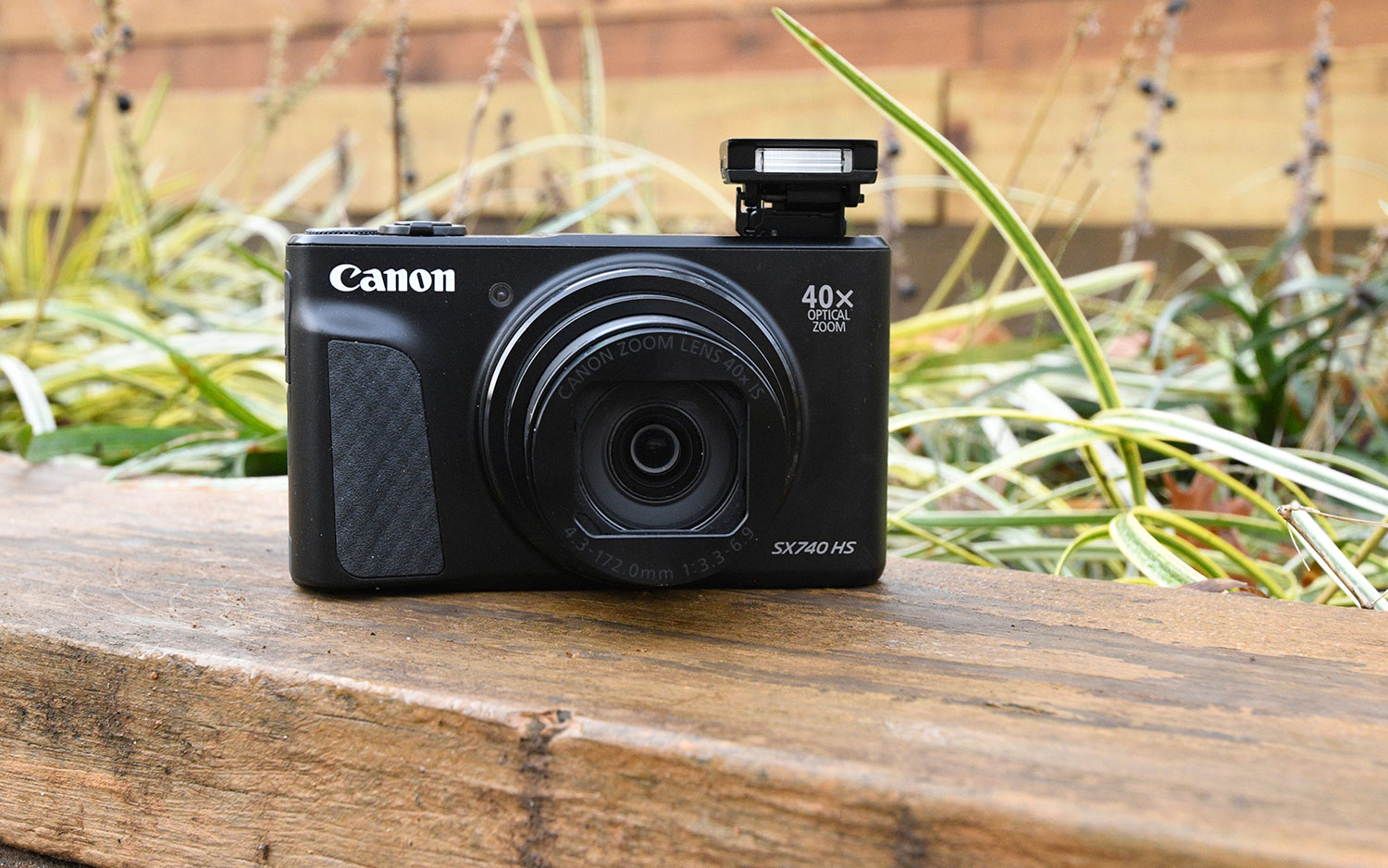Tom's Guide Verdict
The compact mega-zoom Canon SX740 HS (24-960mm) offers a good balance of simplicity and ease of use, along with multiple exposure controls and an extremely versatile zoom lens that will help expand your picture-taking capabilities.
Pros
- +
Image-stabilized 40x zoom
- +
Pocket size
- +
Auto and Manual exposure controls
- +
180-degree tilting LCD
- +
4K video
Cons
- -
No viewfinder
- -
No touch screen
- -
Limited ISO/low-light performance
- -
No Raw
Why you can trust Tom's Guide
Who's this camera for?
Those who want a pocket-size camera with extreme zoom capabilities will find the Canon PowerShot SX740 HS extremely appealing. Beginners and snapshooters will appreciate the camera's simplicity, while photographers with a little more experience will enjoy taking advantage of the semiautomatic and manual exposure controls.
The versatile Canon SX740 HS retains many of its predecessor's strengths, including an image-stabilized 40x (24-960mm) zoom lens and a 20-MP sensor. But with a new, DIGIC 8 processor, the SX740 HS can now shoot 4K video and capture images at up to 10 frames per second. For $380, it's a good go-anywhere pocket camera.
What I liked
Pocket-friendly size, solid build
Small enough to be an anywhere and everywhere companion, this little camera measures 4.3 x 2.5 x 1.6 inches and weighs a mere 10.5 ounces with battery and SD card installed. Although not as slender as a smartphone, the SX740 HS fits easily into most pockets.
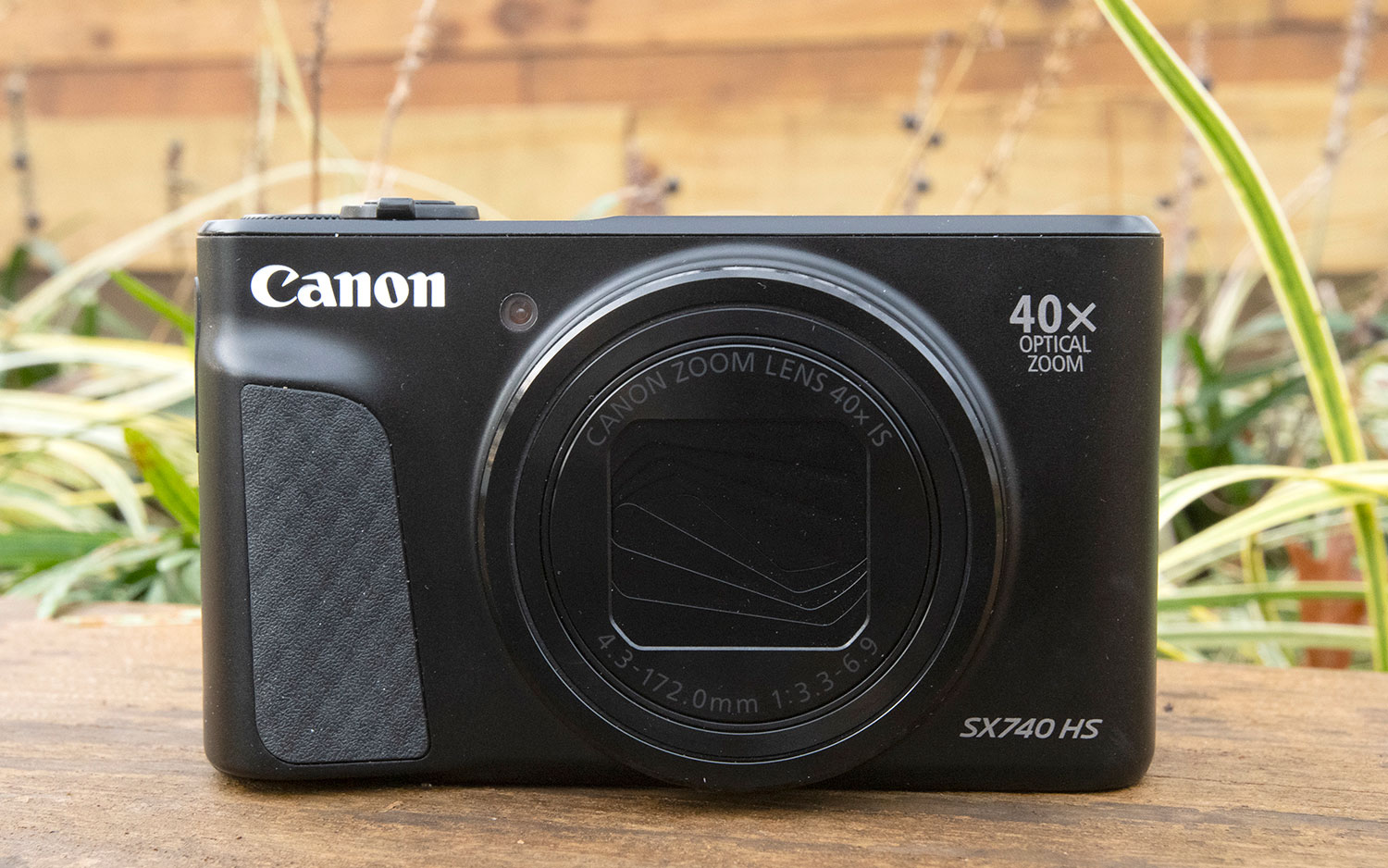
This all-metal camera looks and feels solidly built. A textured grip and thumb rest provide a good handhold. The dials and buttons work smoothly, too. Overall, this camera is quite well-constructed, especially for the price.
Super zoom lens
Despite this camera's petite size, Canon has managed to equip the SX740 HS with a 40x, image-stabilized zoom lens with a 35mm-equivalent focal range of 24-960mm. That covers a lot of ground, from group photos of family and friends to close-ups of distant subjects like a bird sitting up in a tree. The camera's optical image stabilization works well, but you may want to use a mini-tripod or other support system when you're zoomed in all the way. For the best results, stick with the optical zoom; there's a 4x digital zoom (for a total of 80x or a focal length of about 1920mm), but results aren't great with that, even with a tripod.
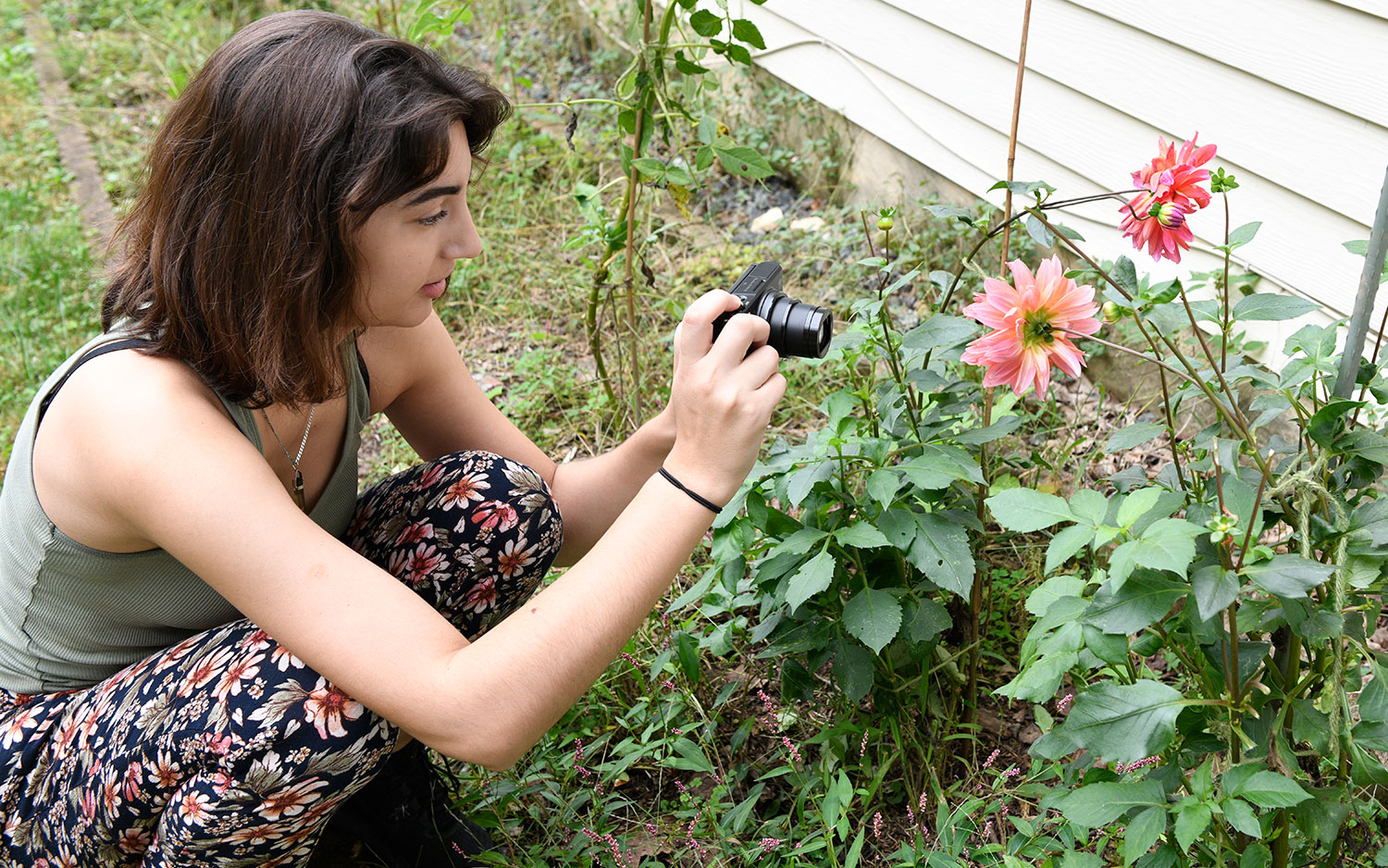
When shooting at full telephoto, you may lose track of subjects, especially smaller ones like birds or dogs. The SX740 HS has a nice feature to deal with that. Just press the Zoom Framing Assist button on the back of the camera (to the left of the Wi-Fi button) to zoom out so you can reacquire your subject. Release the button, and the lens will automatically return to the zoomed-in position. It's a nifty little feature.
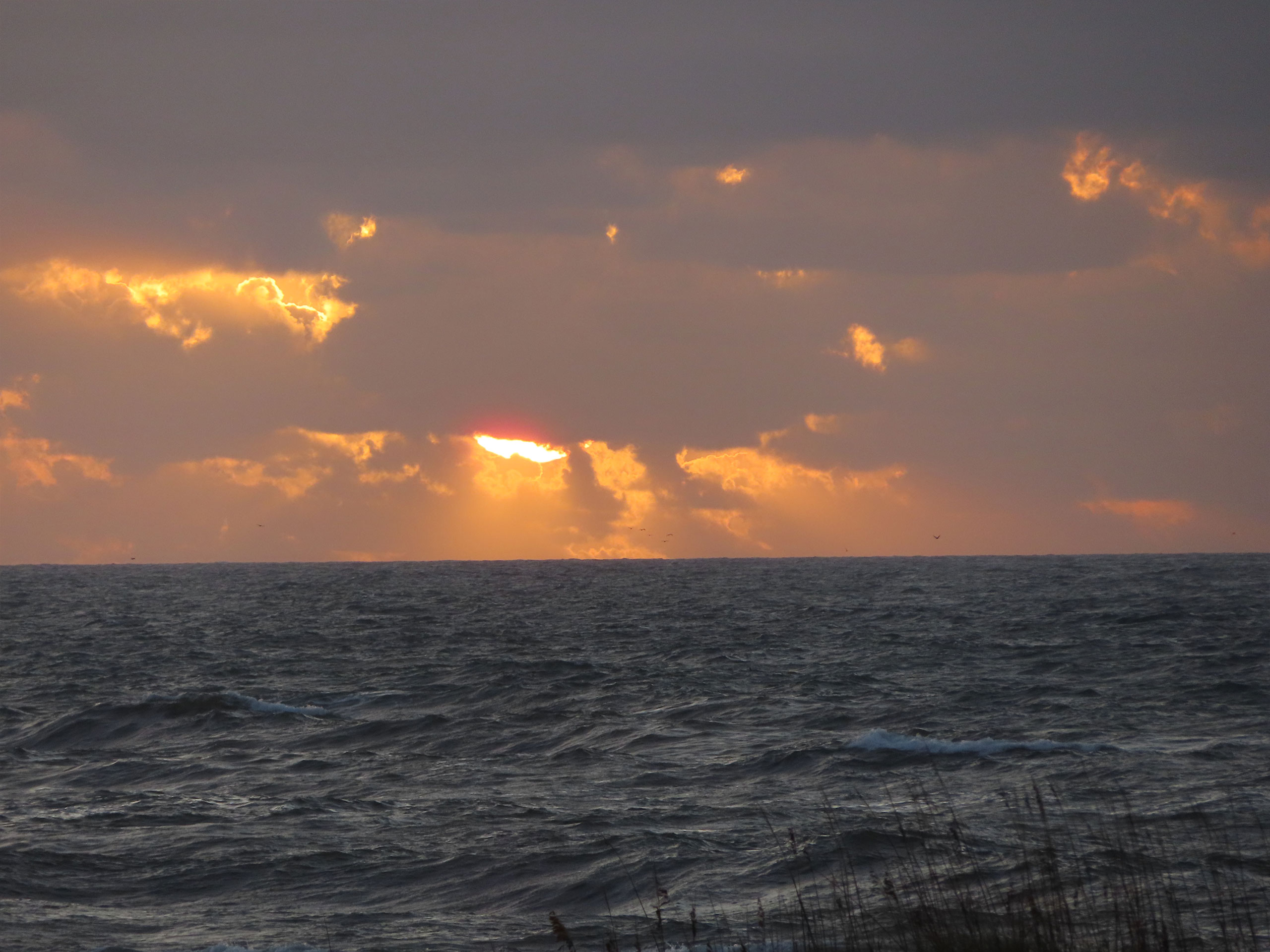
Versatile exposure controls
The Canon SX740 HS may look and feel like a point-and-shoot camera. In addition to Auto and Program options, the SX740 also offers various specialty and creative modes such as Food, Portrait, Grainy B&W, and Fisheye.
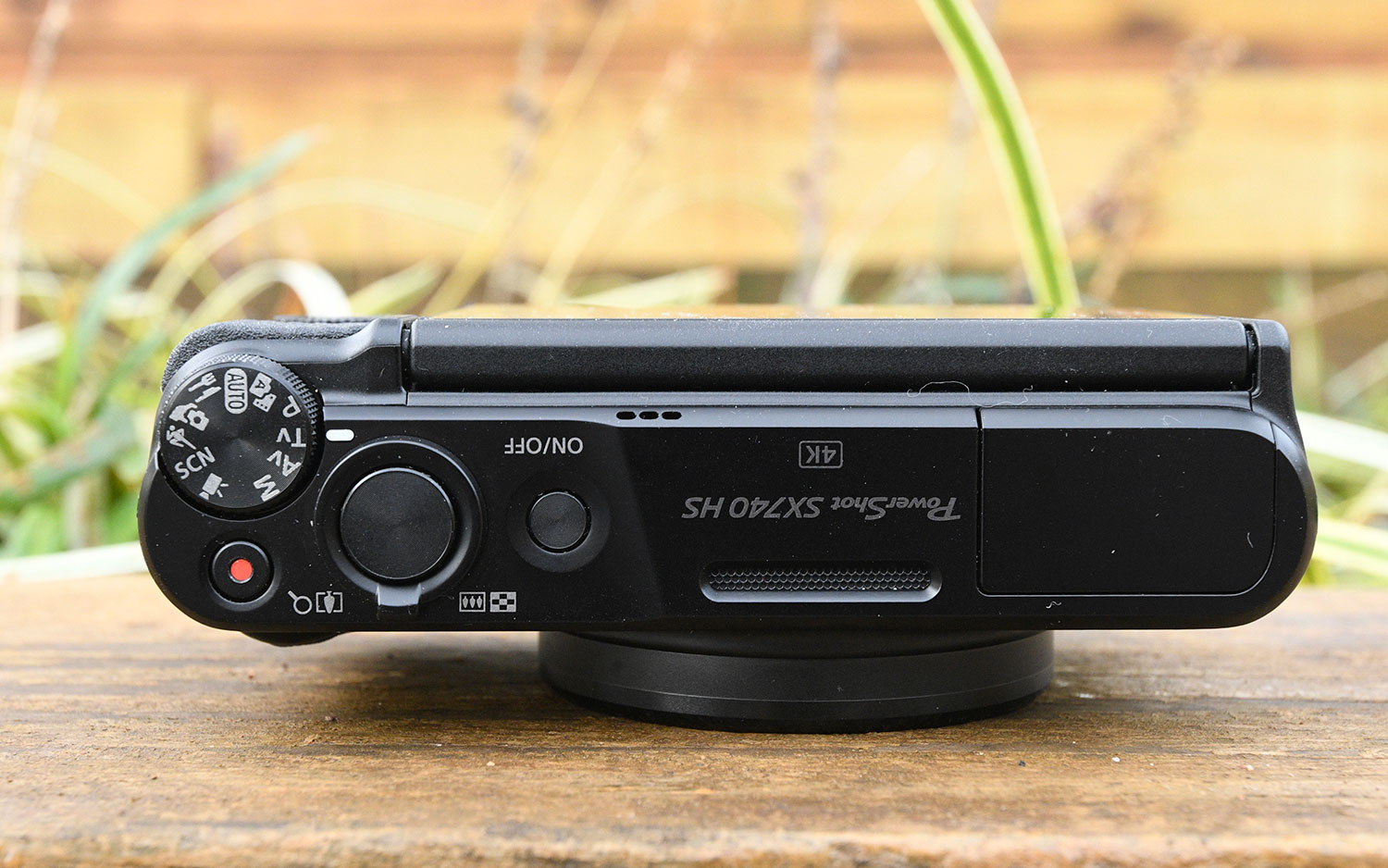
But more-experienced users — or those who want to learn how to better control their images — have access to full semiautomatic (aperture- and shutter-priority) modes as well, as full manual exposure control.
Built-in help
A Guided Menu system with a Feature Assistant is available for those who want a simplified menu layout and explanations for each setting option. The Guided Menu is easy to navigate, as is the Standard Menu. Each time you move the cursor over an option, a brief description of the setting's function appears.
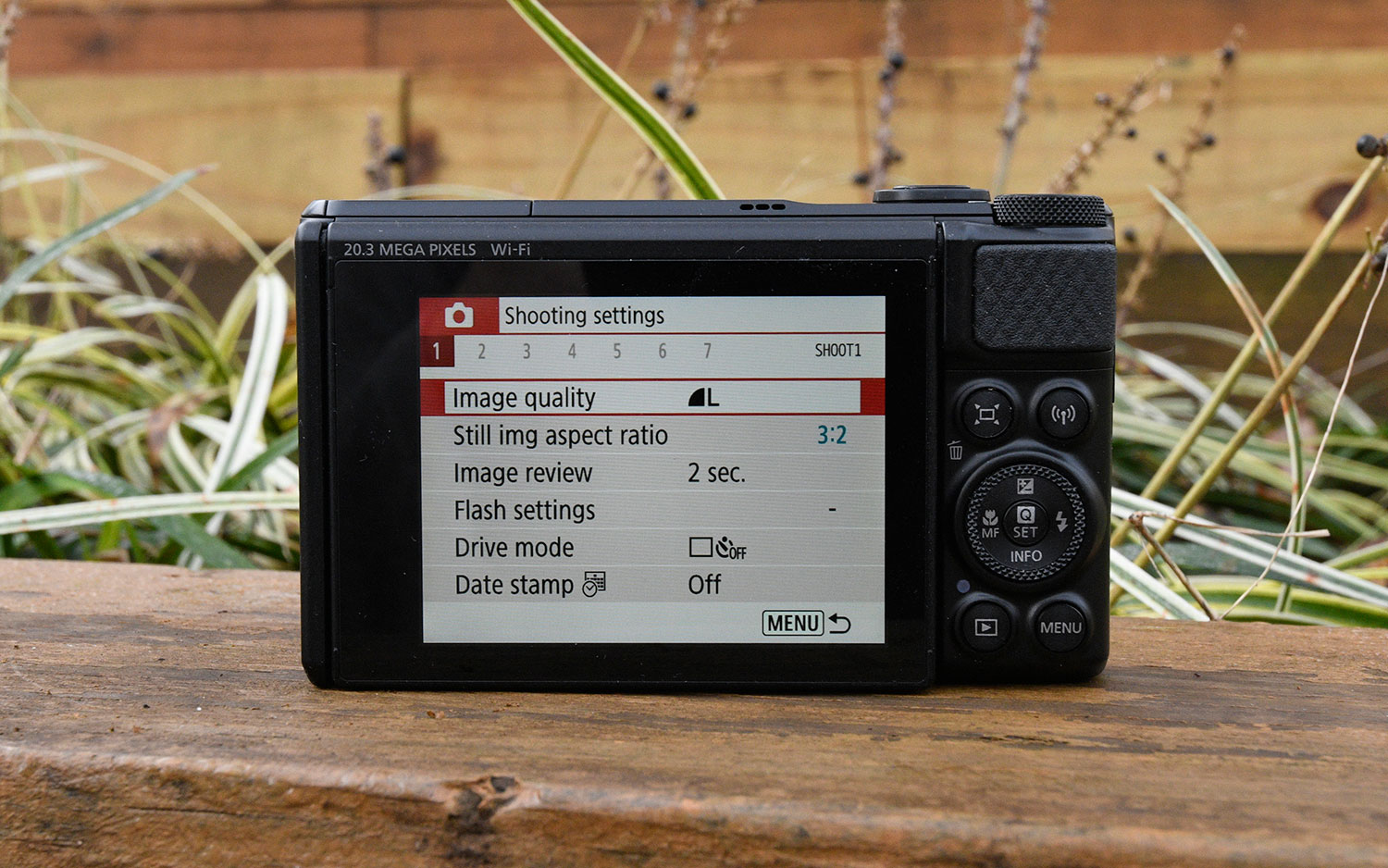
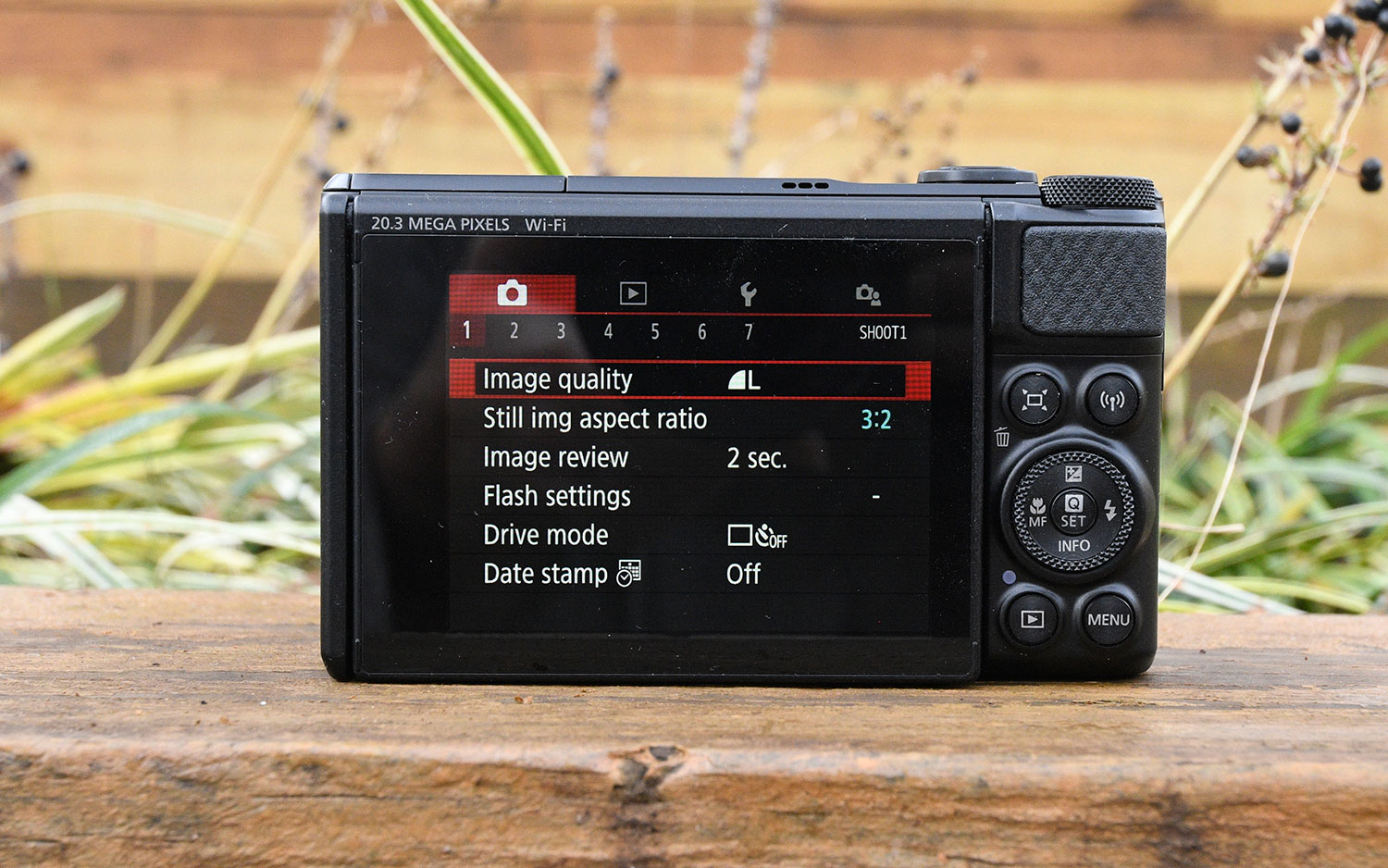
Selfie- and vlogger-friendly LCD
Thanks to the 180-degree-tilting, 3-inch LCD, the monitor can be flipped up for selfies. This design is also perfect for vloggers who want to video themselves when handholding the camera or mounting it on a tripod. The LCD is bright and clear, and thanks to its tilt ability, it can be used for more readily capturing overhead or low-to-the-ground images.
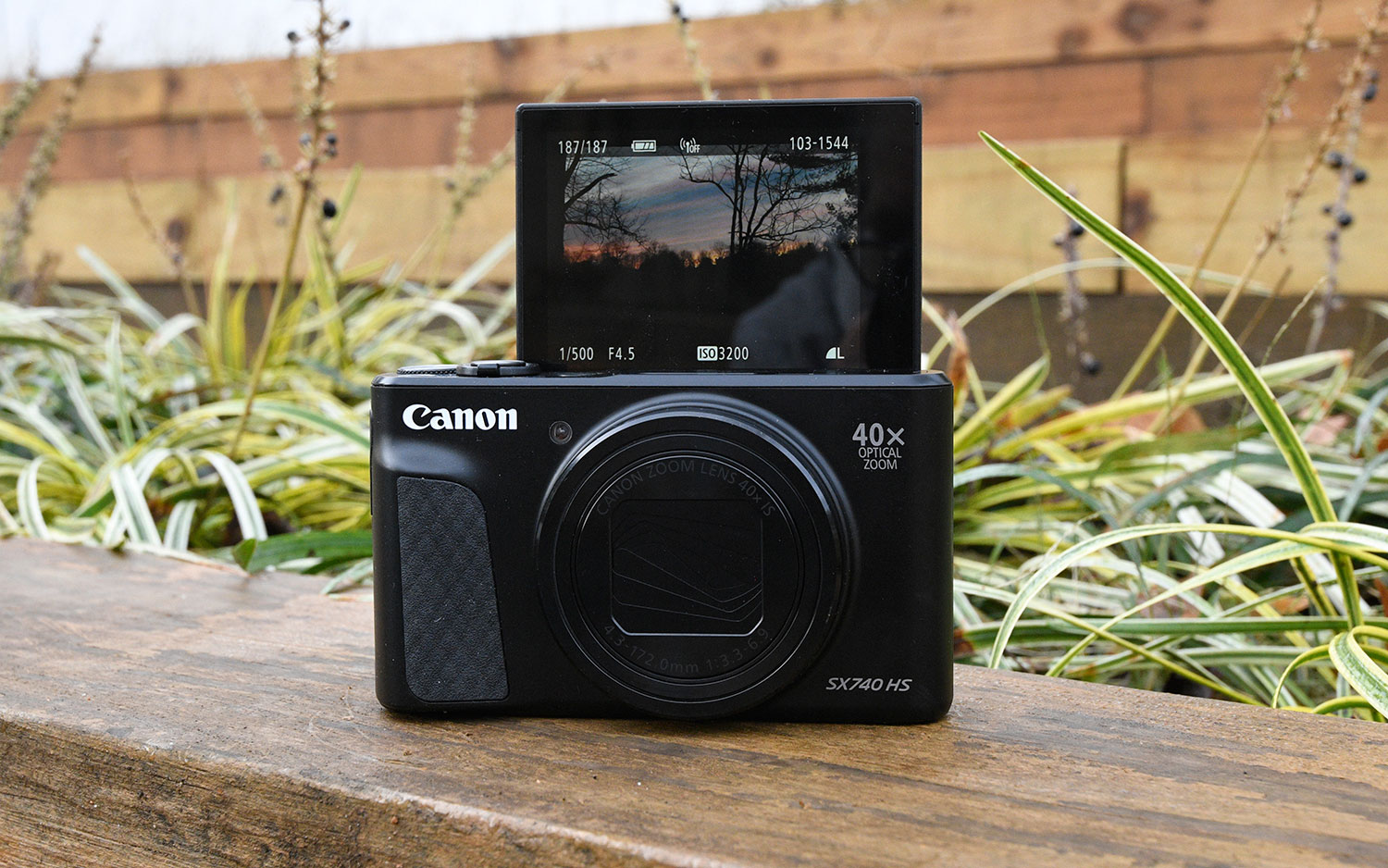
Good image quality
I was pleasantly surprised by the SX740 HS's image quality. I generally shot in the Standard mode, and, with few exceptions, colors were accurate and nicely saturated. Images were sharply focused, with good detail, and exposures were almost always spot-on — even in high-contrast situations.

If you want brighter colors, switch to the Vivid setting; there's also a Neutral setting, which seems to dial down the contrast and color saturation. You can also customize the parameters of individual styles by adjusting sharpness, contrast, saturation and color tone to suit your aesthetics. Video quality is similarly quite good, with sharp focus and pleasing colors.
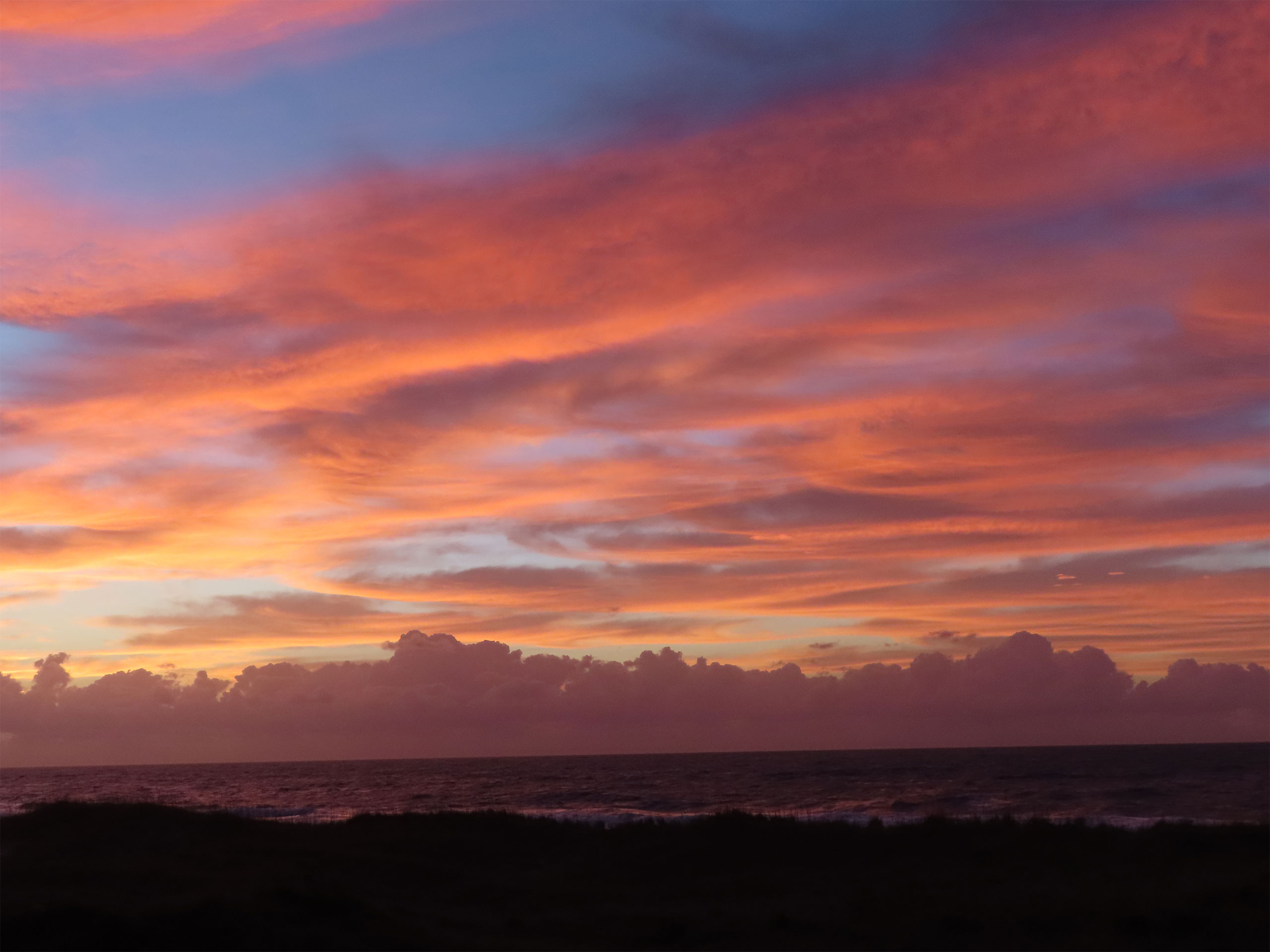
4K video
The SX740 HS is the first Canon PowerShot to feature 4K video, a welcome addition. (There's also a 4K time-lapse feature.) You'll have to move the mode dial to the video icon to access 4K, though. Otherwise, you're limited to Full HD (1920 x 1080 at 60 or 30 fps) or Standard HD (1280 x 720 at 60fps). The latter is preferable, though, if you want to save on media card or computer hard-drive space.
Wi-Fi and mobile app
Canon's Camera Connect has one of the easiest-to-use and most feature-rich mobile apps for iOS and Android. You can, of course, transfer images from camera to mobile device. But you can also send images directly to a Wi-Fi printer or to the cloud. You can sort and search images by date, and starting the Wi-Fi connection is one-click simple, via the Wi-Fi button on the back of the camera.
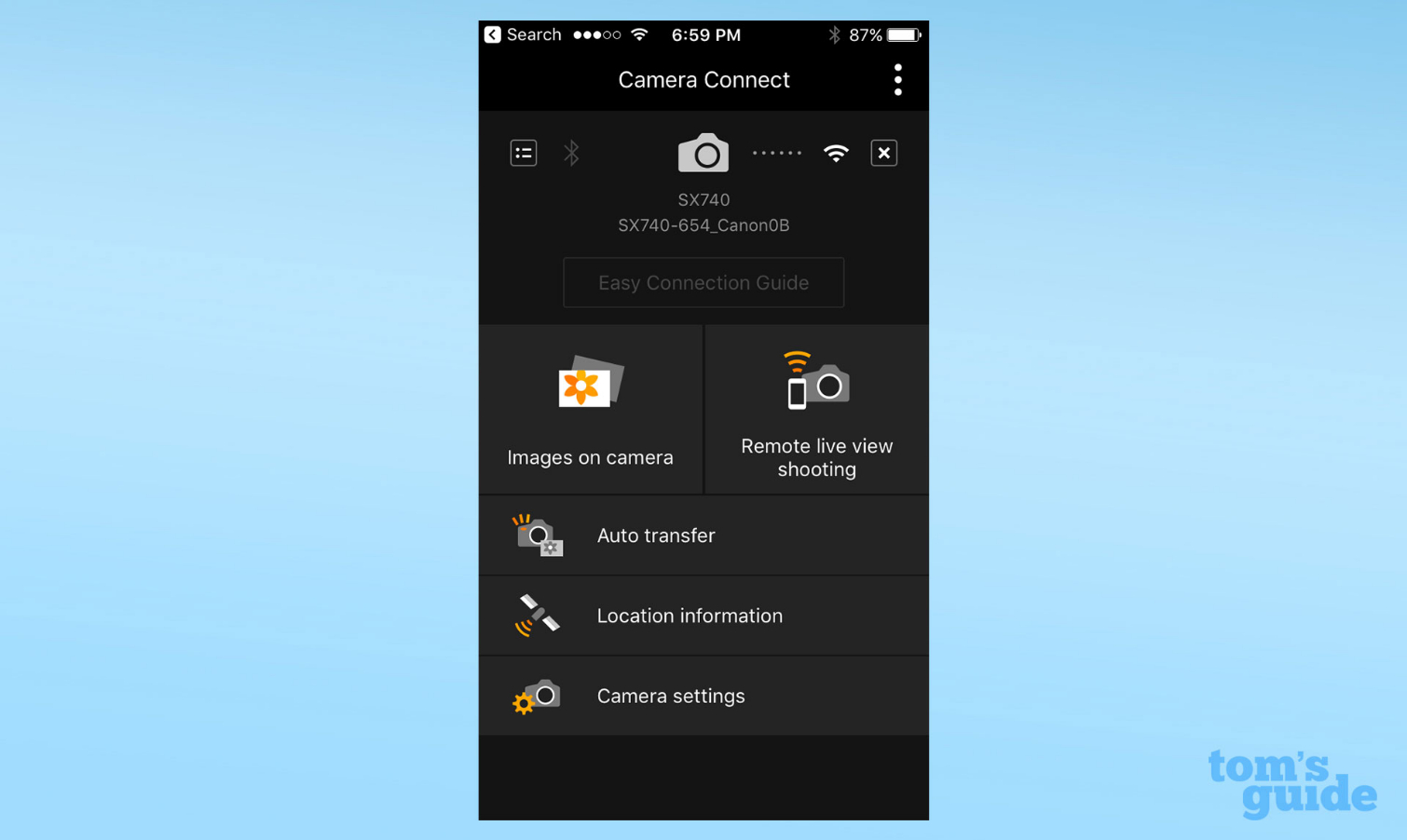
Where the app really excels is with its remote-shooting capabilities. Via the app, you can set autofocus, zoom, change exposures manually, select white balance, change the ISO and choose from Single/Continuous/Self-Time to Continuous shooting.

You can even shoot video remotely but cannot transfer 4K video. If you haven't tried shooting remotely, this is the perfect camera and app to check it out.
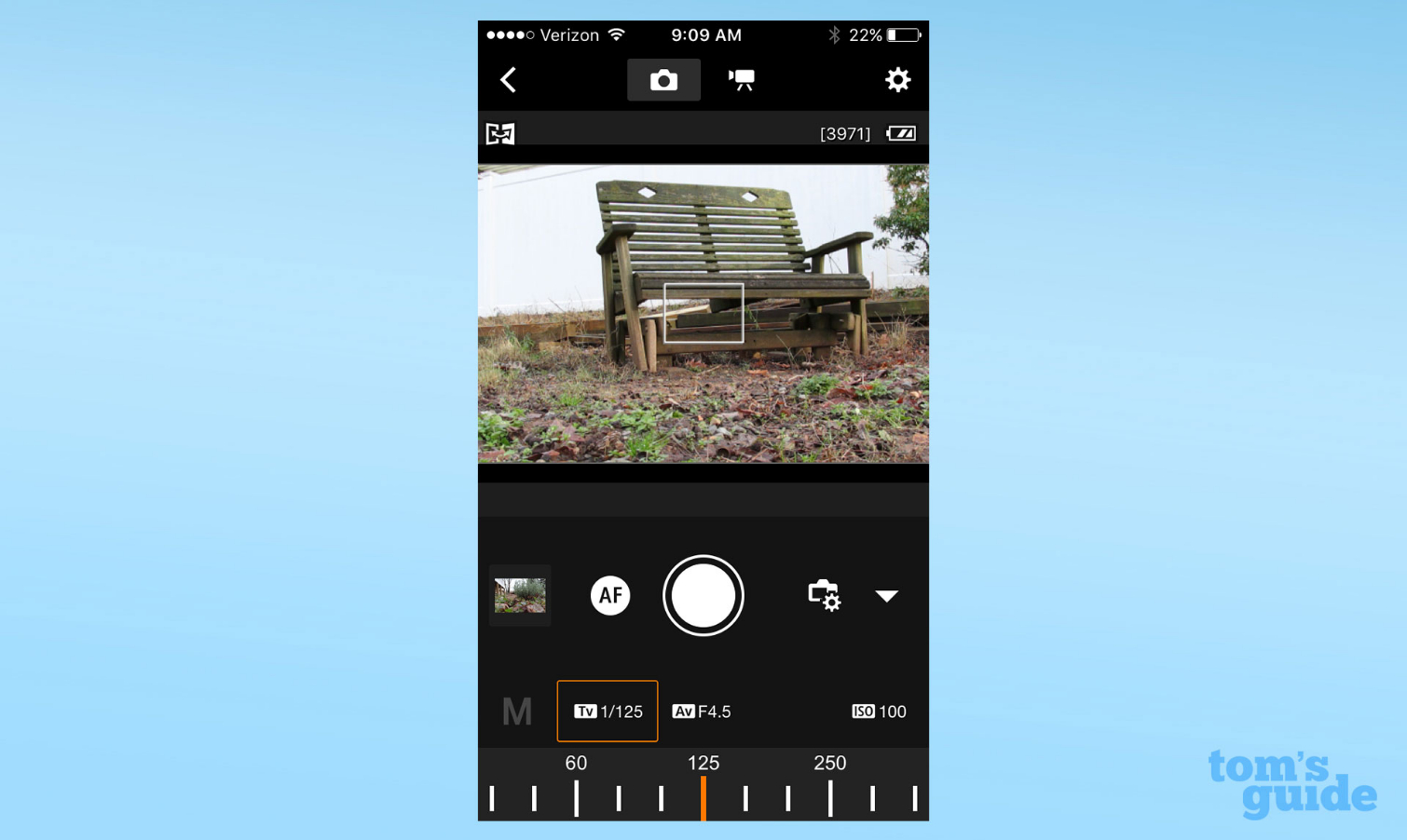
What I didn't like
No optical viewfinder
I like shooting with optical viewfinders for two main reasons. First, holding the camera to the eye helps steady the camera. That's important when you're shooting with a telephoto lens — especially at 960mm. While the SX740 HS's image stabilization is quite good, the extra support of a viewfinder will help prevent camera shake.
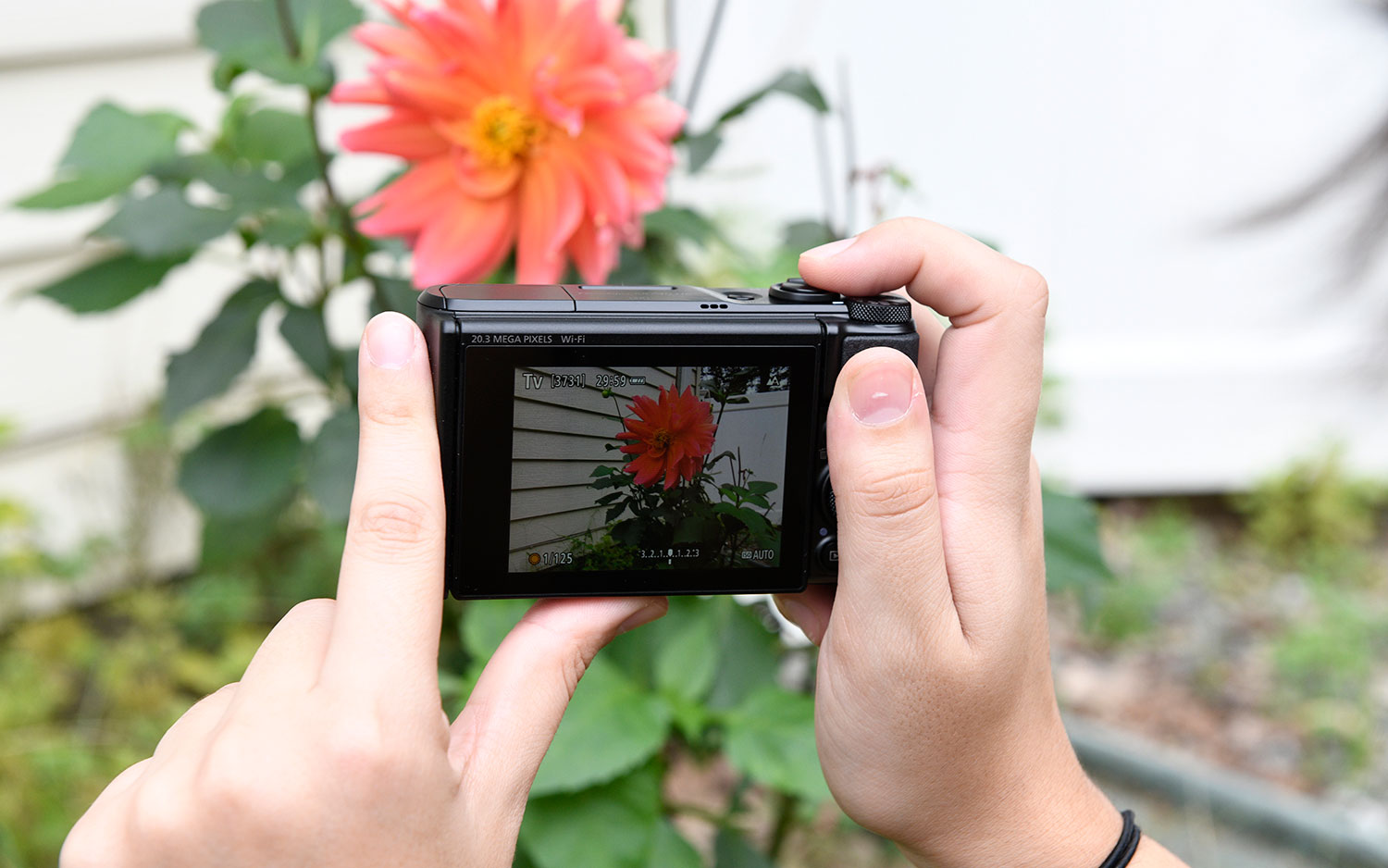
And if you're shooting in bright sunlight, it's often easier to compose through the viewfinder than on an LCD that may be difficult to see because of reflections. Fortunately, the SX740 HS's LCD tilts so you can alleviate some glare, but a viewfinder would totally eliminate the issue.
No touch screen
The SX740 HS would benefit from a touch interface, even if it's just for setting focus. This would be especially helpful for selfie-takers and bloggers. Probably not a deal-breaker for most people, but a touch screen, like a viewfinder, would add to this camera's appeal.
4K video crop
In 4K video mode, the image is cropped, so the field of view won't be as wide-angle as you might like. This is not a huge deal, but it's something to be aware of. On the other hand, everything looks closer in this cropped view, so you'll benefit on the telephoto end.
Small controls
With a petite camera, you get small controls. If you have larger hands, it's best to try this camera on for size before you buy it.
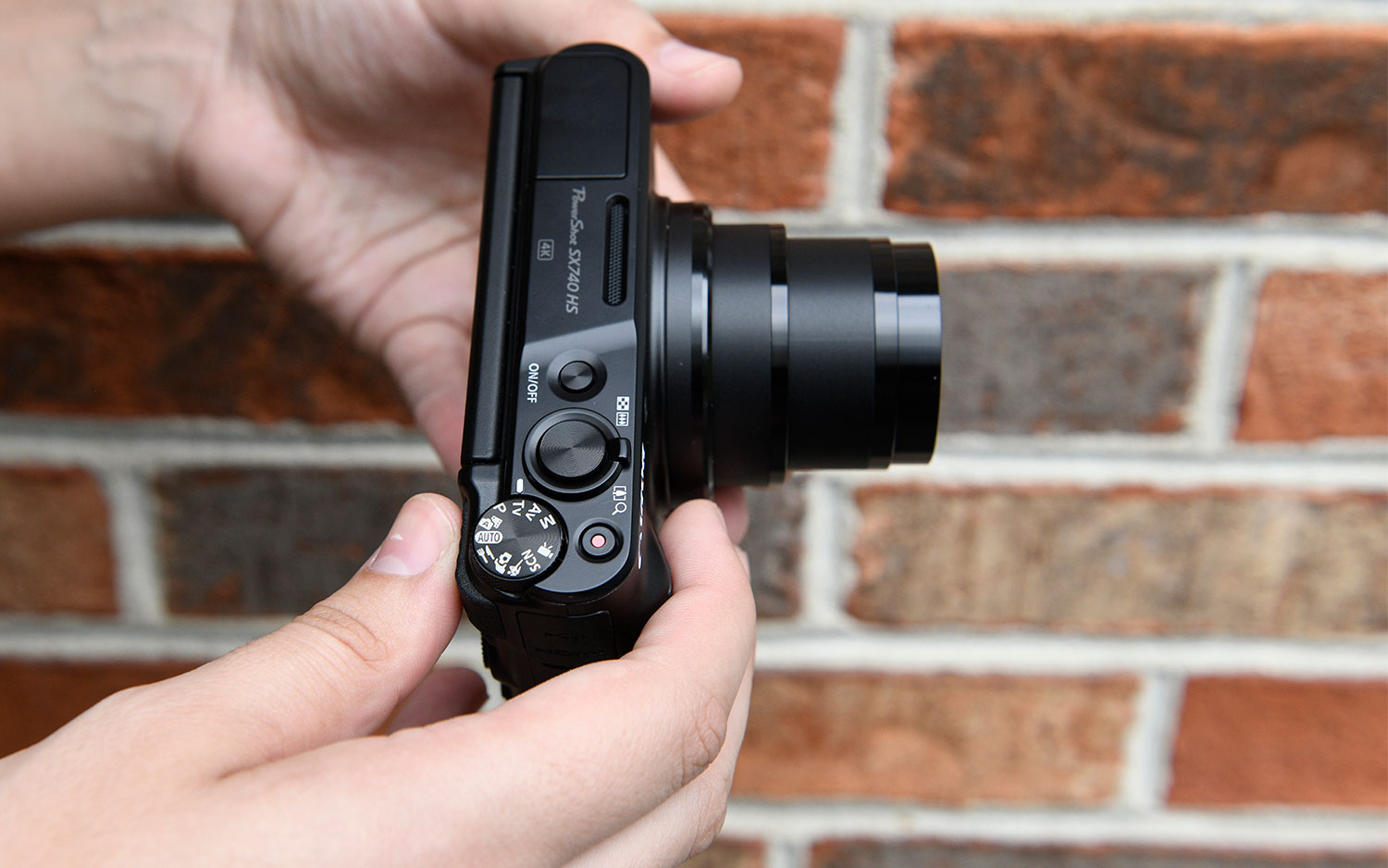
You may like the idea of a pocketable camera, but if you can't comfortably work the dials and buttons, then the convenience of the small body isn't worth the trade-off.
Limited low-light performance
Canon keeps the ISO range relatively small for this camera. The lowest ISO is 100; the highest is 3200 (1600 maximum in Auto). This doesn't give you a lot of options in low-light situations, so you may be forced to use the little built-in flash when in darker conditions. If you can, it's best to keep the ISO at 800 or below to help avoid image noise. Noise increases at higher ISOs, so you may want to limit those images to online or email sharing.
Bottom line
Although we'd love to see an optical viewfinder, touch screen and Raw options, the SX740 HS will meet most people's needs for a compact superzoom camera. Importantly, the lens's broad focal range opens up a whole new world to those who have been limited by other cameras' more modest zooms.
Despite some of my criticisms, this is a great little camera. With its extreme lens, you'll be prepared for any and every shooting opportunity. And because it's so portable, you won't miss those opportunities because you left your camera at home.
Credit: Tom's Guide/Theano Nikitas
Theano Nikitas is a freelance journalist and photographer. She's been writing about photography for more than 20 years, contributing countless reviews of cameras, lenses, accessories and software packages to Tom's Guide. Her work has also appeared in dozens of other magazines and websites, including CNET, DPreview, PopPhoto, Professional Photographer and Shutterbug.
